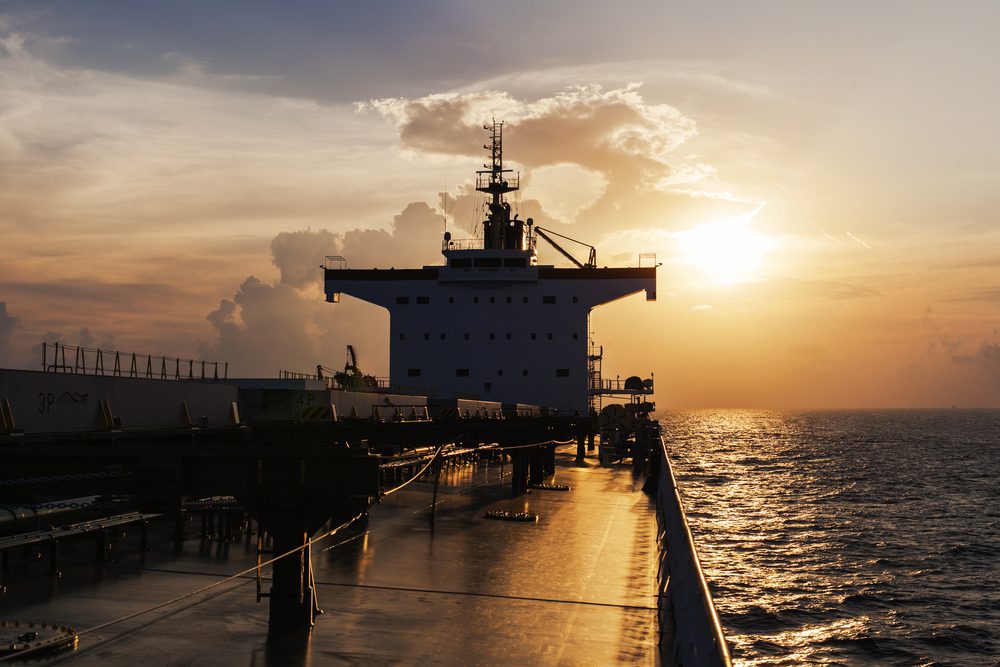This week’s chart visualizes the 14-day moving average of actual port days for energy cargo at Far Eastern ports, comparing the Capesize, Panamax, and Supramax segments. There is a notable decreasing trend in the Capesize segment, with the number of days recently dropping to one of the lowest points since early 2021.
In the second week of June, there’s a notable development in Capesize vessel rates on the Brazil to North China route, indicating a firmer momentum. Concurrently, the count of ballast ships has been steadily decreasing, nearing the annual average trend. However, it remains uncertain whether this firmness will persist for the rest of the month, given that the growth in demand tonne days has yet to show signs of a surprising rise. Meanwhile, concerns persist about Chinese economic prosperity, particularly regarding firm demand for iron ore. Although signs indicate a strong appetite for coal, clouds hover over China’s economic outlook. Import data from customs and Reuters revealed that China’s coal imports surged by 11% in May compared to the previous year. Lower domestic output has necessitated increased shipments of international coal.
According to customs data, China imported 43.82 million metric tons of coal in May, compared to 39.58 million tons in May 2023, as recorded by Reuters. These developments underscore the intricate interplay between global trade dynamics and China’s economic trajectory, with implications for the broader maritime industry.
SECTION 1/ FREIGHT – Freight Rates ($/t) Firmer
‘The Big Picture’ – Capesize, Panamax Bulkers and Smaller Ship Sizes
In the second week of June, the Capesize Brazil to North China route shows signs of firmer momentum. Additionally, the downward spiral of freight rates for larger vessel size categories appears to have paused. However, these recent increases have not yet strengthened market momentum significantly, as there is a prevailing wait-and-see approach for a better balance between the number of prompt cargoes and available supply.
Capesize vessel freight rates shipments from Brazil to North China are now at around $26 per ton, marking a 32% annual increase.
Panamax vessel freight rates from the Continent to the Far East have remained steady for a second consecutive week at around $39 per ton. Recent data indicate a 20% surge compared to the rates observed a year ago.
Supramax vessel freight rates on the Indo-ECI route held levels around $11 per ton over the last three weeks, marking a 50% increase compared to a comparable week from a year ago.
Handysize freight rates for the NOPAC Far East route remained consistent with the sentiment of the previous four weeks, standing at approximately $36 per ton. This marks a notable 29% increase compared to levels observed a year ago.
SECTION 2/ SUPPLY – Ballasters (# vessels) Decreasing
Supply Trend Lines for Key Load Areas
June saw a continued decrease in the number of ballast ships across all vessel size segments, with the smaller vessel segments recording counts below the annual average.
Capesize SE Africa: The count of ballast ships has decreased to 114, just 7 more than the annual average. This marks a 17% decrease from the peak recorded during week 20.
Panamax SE Africa: The number of ballast ships has decreased to nearly 130, approximately 7 lower than the annual average and around 50 lower than the peak observed in week 20.
Supramax SE Asia: The count of ballast ships is now below 100, marking the continuation of four consecutive weeks of persistent decreases.
Handysize NOPAC: Since the end of week 17, the count of ballast ships has consistently remained below the annual average of 80. Recent indications show a decrease to around 70 from the previous week, suggesting a continuing downward trend for the second half of June.
SECTION 3/ DEMAND – Tonne Days Mixed
Summary of Dry Bulk Demand, Per Ship Size
In the second week of June, the outlook for dry tonne days is mixed. The consistent decline in the Capesize segment has paused, shifting to a flat momentum, while signs of recovery are evident in the Panamax segment.
Capesize: Although June levels remain the lowest since the peak observed in week 12, there are signs of a break in the downward trend. The growth of tonne days for the second half of the month remains to be seen.
Panamax: Last week’s indications of a reversal in the decline of tonne-day growth have been confirmed, with a recent upward trend emerging compared to the low point observed in week 20.
Supramax: The growth rate continued its weakening trend, showing a further decline from the levels observed in the previous month.
Handysize: The decline in the tonne-day growth rate maintained a similar pace to previous weeks, with no signs of an early recovery evident at the current rate.
SECTION 4/ PORT CONGESTION – No of Vessels Increasing
Dry Bulk Ships Congested at Chinese Ports
The upward trend observed in late May has persisted into the second week of June, with Chinese dry bulk congestion significantly increasing across all vessel size segments, except for the Capesize segment, which shows signs of a downward trend.
Capesize: Capesize ship congestion dropped to 110 reflecting a decrease of 6 from the levels observed a week ago.
Panamax: The number of Panamax vessels continued to rise, reaching levels above 250, which is nearly 20 more than the previous week.
Supramax: Congestion levels have escalated further from the previous week, now surpassing the 260 marks, with an increase of nearly 30 compared to the previous week.
Handysize: Congestion levels have increased to around 180, marking a rise of 20 compared to the previous week, and the trend suggests a continued increase for the remainder of the month.
Source: Hellenic Shipping News






